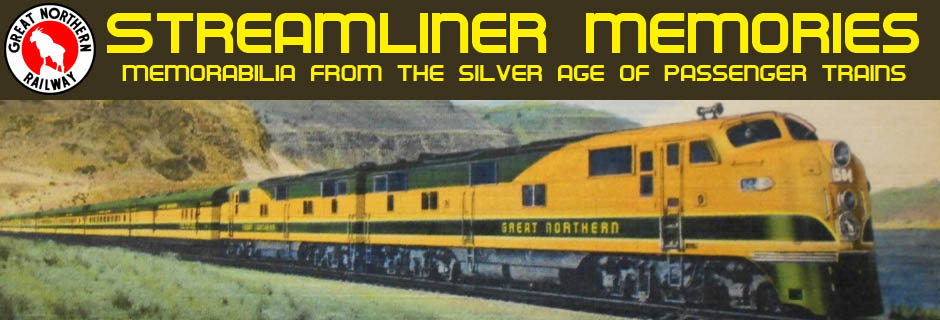
This photo of Pleasure Dome 501 was taken on January 29, 1951, the day the Pleasure Domes were first introduced to regular service on the Super Chief. Click image for a larger view.
With the delivery of new Pullman-built sleepers after the war, the Santa Fe had upgraded the Super Chief to daily service on Leap Day (February 29), 1948. On January 28, 1951, the Santa Fe added a single dome car to each of its Super Chief trains. Built by Pullman, the domes had flat panes of glass and were mid-way in height between the B&O and Wabash domes.

Cutaway diagram shows the dome, lounges, and Turquoise Room. Click to download a 2-MB PDF of this brochure introducing the Pleasure Dome.
Despite the flat-paned windows, these cars may have been the most luxurious style dome cars ever built. A large lounge with seats for about 20 graced the long end of the car, while a smaller lounge with seats for ten was located under the dome along with a small bar to serve drinks. The short end of the car was the famous Turquoise Room, a private dining room for up to 12 people. The car was always located next to the train’s diner so waiters could easily serve people in this room.
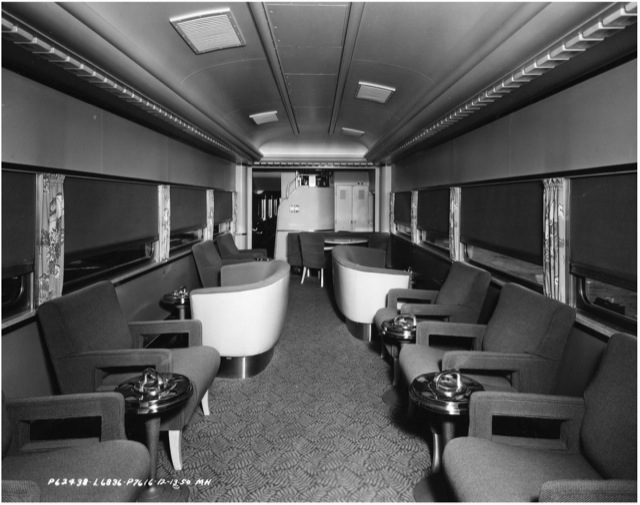
As built, the lounge at the long end of the car had minimal decoration other than the curtains. Click image for a larger view.
The car was decorated with various representations of Southwest Indian art. A Santa Fe refit in 1957 added two Navaho sand paintings to each car. These paintings were not in fact made by a Navaho but by artist and historian Luther A. Douglas. The Santa Fe noted that the paintings used sand from each of the states served by the railroad.
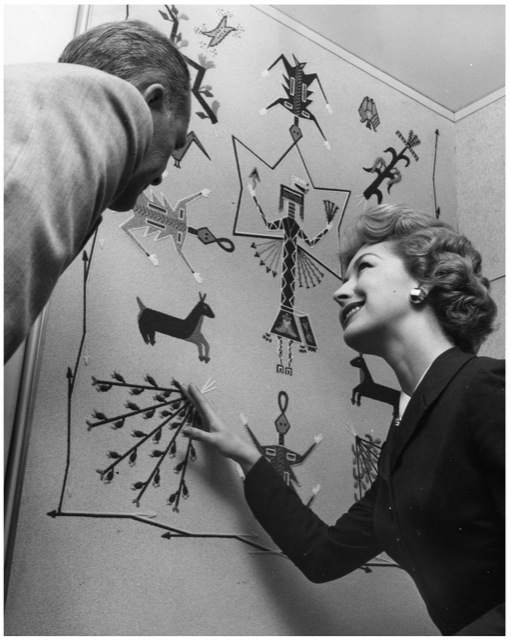 In 1957, sand paintings were added to each of the lounges. This painting is called “Indian Chants.” Click image for a larger view.
In 1957, sand paintings were added to each of the lounges. This painting is called “Indian Chants.” Click image for a larger view.
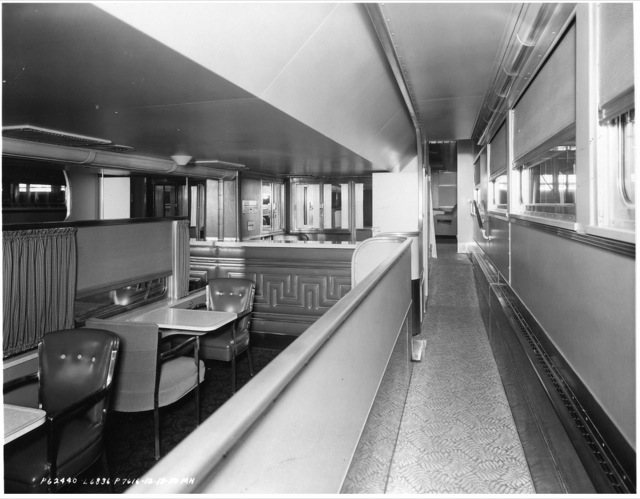
The lounge beneath the dome was separated from the hall by a waist-high partition, and partitions inside the lounge offered additional privacy. In 1957, a second sand painting was placed on the kick panel in front of the bar. At that time, the ceiling was also modified with punctured panels to create a romantic starlight effect. Click image for a larger view.
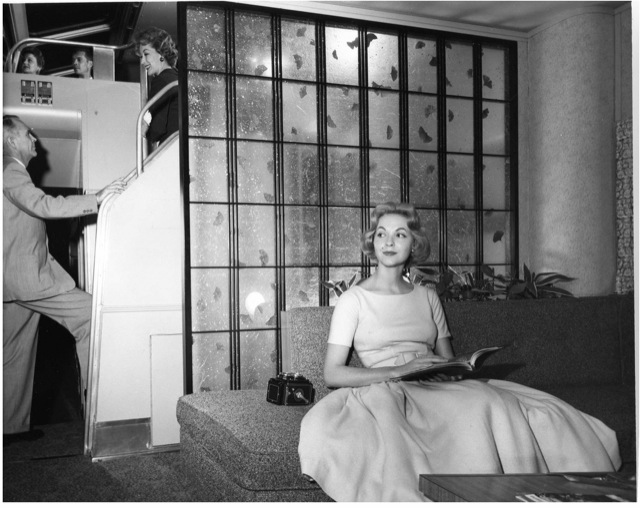
Taken in the early 1960s after the cars were remodeled, this publicity photo shows a translucent screen separating the dome stairway from the main lounge.
The dome itself was unique among short domes in having only 16 instead of 24 seats. Eight of the chairs swiveled around, parlor-car style, in the center of the dome; the other eight were the standard side-by-side seats at either end of the dome.
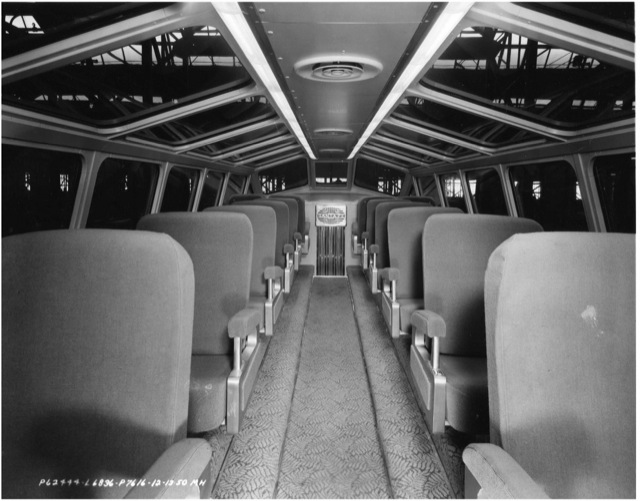
The dome itself had reasonably sized windows and eight swivel chairs, as shown here, plus four double-seats, two sets of which are shown in the background of this photo. Click image for a larger view.
Of course, this meant that only a tiny share of Super Chief riders would be able to enjoy the dome. The all-Pullman train’s standard consist after the dome was added had beds for up to 146 passengers, meaning up to 130 would be disappointed if they wanted to be in the dome. Perhaps the Santa Fe suspected that most riders of the “train of the stars” preferred the privacy of their rooms.
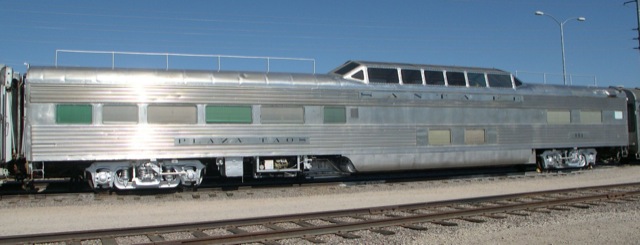
Click image for a larger view.
The Pleasure Domes were numbered 500 through 505, but they were also assigned names: Plaza Acoma, Plaza Laguna, Plaza Lama, Plaza Santa Fe, Plaza Taos, and Plaza Zuni. For some reason, the Santa Fe never applied these names to the cars. However, later owners of the Plaza Lamy, Plaza Santa Fe, and Plaza Taos put the names on the outside of their cars.
